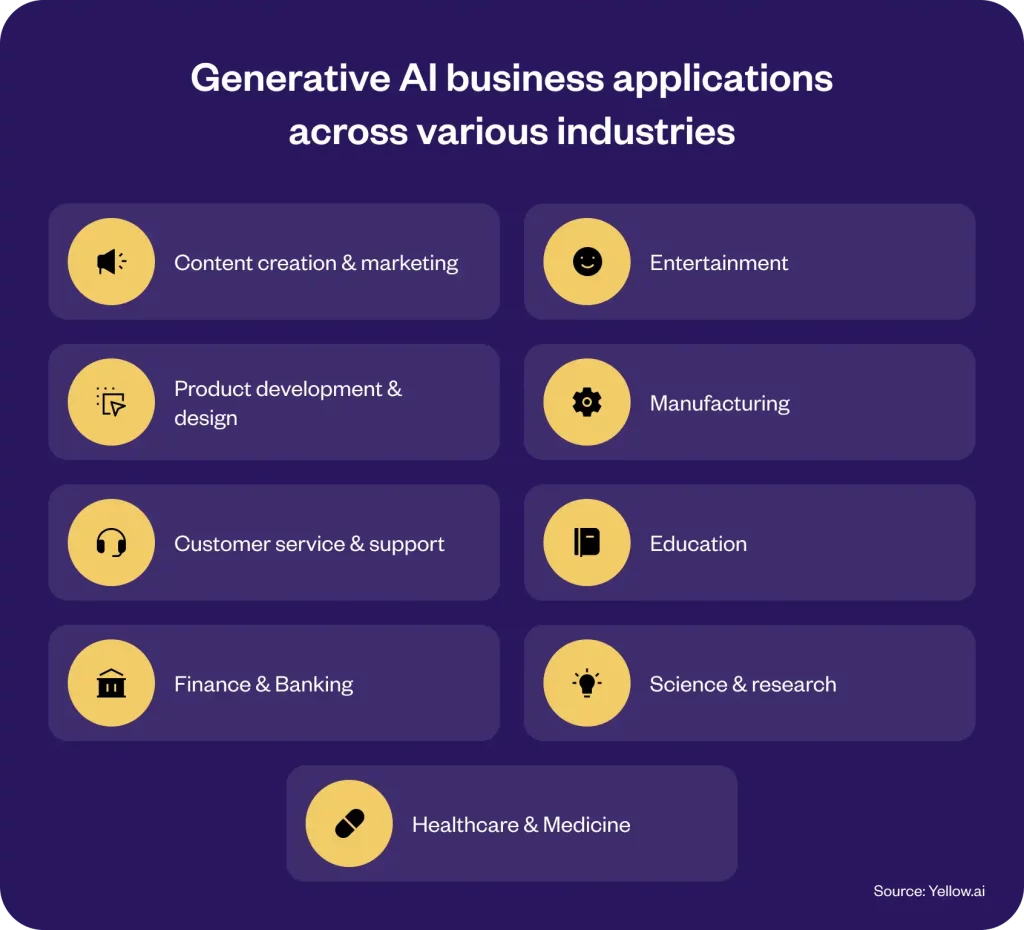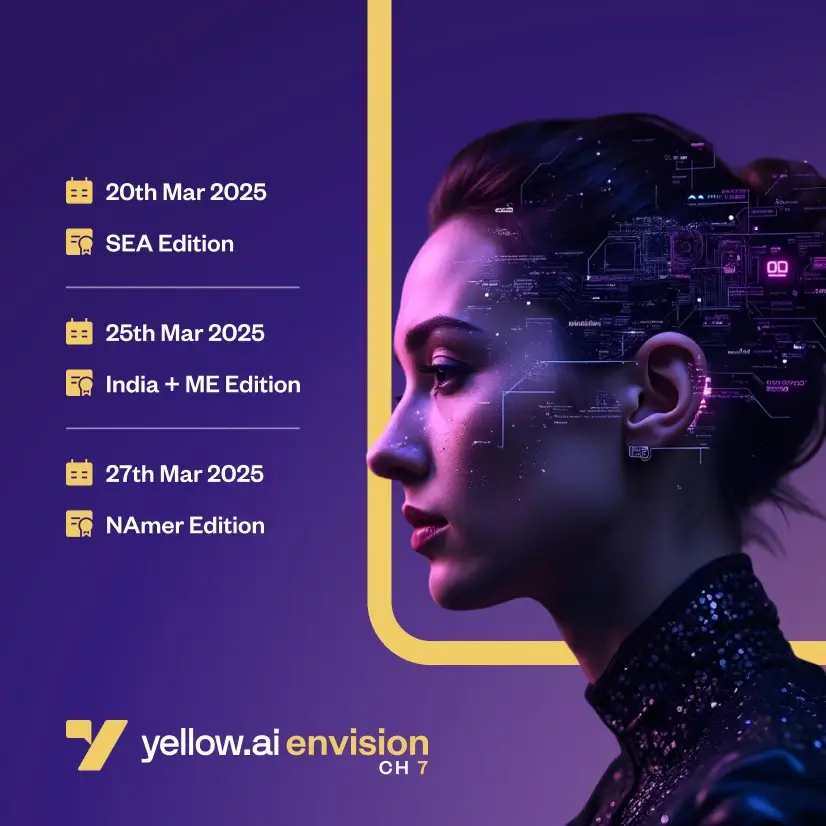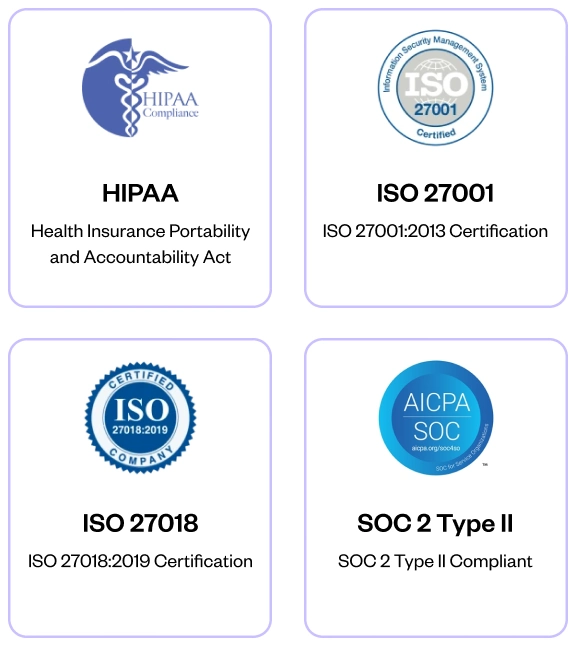Generative AI applications have grown incredibly fast, touching every industry you can think of. It’s rare to find an area where generative AI isn’t making a significant impact, showing off its wide range and strength. Generative AI drives a massive wave of new ideas and changes, from transforming how we create and market content to leading discoveries in science and research.
The survey by KPMG sheds light on the broader expectations for the influence of generative AI. An impressive stat says that 77% of executives anticipate that, in the next three to five years, the impact of generative AI on society will surpass that of any other emerging technology.
As we delve into the expansive world of generative AI, this blog will spotlight critical areas where this technology is making a significant impact. We’ll explore how it’s reshaping content creation and marketing, revolutionizing customer service, and sparking innovations in finance and product development. Expect insights into its transformative role across various sectors, highlighting breakthroughs and the forward-thinking strategies driving this wave of change. Join us on this journey to uncover generative AI application’s profound influence and boundless potential.
What is Generative AI?
Generative artificial intelligence marks a groundbreaking segment within the realm of AI, renowned for its prowess in crafting new data that closely emulates human-like creativity and reasoning. Generative AI is a sophisticated AI system nurtured on extensive datasets and transcends beyond simple data analysis. They proactively produce unique text, images, audio, or video content, employing complex deep-learning techniques and expansive language models.
The distinctiveness of generative AI stems from its adeptness at handling a broad spectrum of text prompts, ranging from the straightforward to the intricately complex, facilitating interactions that resemble those with a human. This advancement is revolutionizing our dialogue with technology, making digital interactions more fluid and human-like. It’s eroding the once-clear divide between human ingenuity and machine-generated content, heralding an era where the fusion of technology and creativity is both possible and incredibly compelling.
This erosion of the boundary between human creativity and machine capability is not just theoretical—it’s a reality giving birth to a myriad of generative AI applications and unlocking new possibilities across various fields and industries.
Generative AI business applications across various industries
Generative AI is poised to radically alter work anatomy, significantly augmenting human capabilities by automating a substantial portion of tasks that currently consume 60% to 70% of employees’ time. This technology is unlocking new realms of creativity and strategic thinking. As it moves to the forefront of the new business era, generative AI transforms complex tasks and enhances creative processes in previously unimagined ways. As we delve into this evolving landscape, here are some generative AI applications that are redefining the boundaries of possibility and performance:

1. Content creation & marketing
In the bustling marketing world, Generative AI is reshaping the marketing landscape, as evidenced by 73% of U.S. marketers utilizing generative AI tools like chatbots in their line of work. Here’s how various AI models are playing a pivotal role:
Unleashing creativity: Advanced language models like GPT-3 and its successors are at the forefront of automated content generation. These models understand context, nuance, and even style, producing written content that resonates with human readers. Marketers are leveraging these tools for generating articles, blog posts, and even creative narratives, significantly reducing the time and effort required for content creation.
- Automating content creation: Gone are the days of tedious content creation. Gen AI’s understanding of context and nuances in language automates the grunt work, crafting initial drafts and layouts at lightning speed. This allows creative minds to focus on what they do best: innovating and personalizing.
- Enhancing existing content: Content isn’t static, and neither are your customers. Transformer models like T5 continuously learn from interactions and improve existing marketing materials, making them more effective and relevant by adapting to changing data patterns and user feedback.
- Visual storytelling: Generative models like DALL-E are revolutionizing visual content creation by generating images and artwork from textual descriptions. These systems understand a wide range of concepts and can create visuals that are both unique and contextually relevant. Marketers are using these tools to produce original and eye-catching visuals for campaigns, social media, and more.
- Personalization at its peak: Deep learning algorithms are being used to analyze user data and create highly personalized content. By understanding individual user behaviors, preferences, and engagement patterns, these systems can tailor content to users, enhancing engagement and conversion rates. Techniques like sequence-to-sequence models and reinforcement learning are particularly effective in creating dynamic, interactive content that adapts to real-time user feedback.
- Revolutionizing interactions with AI chatbot: Through intelligent chatbots powered by large language models, generative AI transforms every interaction into an opportunity, providing instant, personalized, and meaningful communication that builds relationships and loyalty.
- Content strategy enhancement: Generative AI goes beyond creation; it helps strategize. By analyzing trends, audience behavior, and content performance, AI can recommend topics likely to engage and convert, assisting marketers in staying ahead of the curve and strategically planning their content calendar.
2. Product development & design
Generative AI is reshaping the landscape of product development and design, offering innovative solutions and accelerating the creative process. Here’s how AI models are making a significant impact:
- Accelerating conceptualization: Variational Autoencoders (VAEs) and similar generative models are enabling designers to explore a vast landscape of potential product designs quickly. By inputting design parameters and desired outcomes, these models can generate a wide array of design variations, helping teams to visualize options and refine concepts more rapidly.
- Enhancing design precision and iteration: Genetic algorithms simulate the process of natural selection to evolve designs over successive generations. By evaluating the ‘fitness’ of each design iteration against specific criteria, these algorithms iteratively improve and optimize product designs for performance, aesthetics, and manufacturability.
- Optimizing materials and resources: Generative AI is being used to predict the properties of new materials and composites, leading to innovations in material science. By understanding the relationship between molecular structures and material properties, AI can propose new materials that meet specific criteria, potentially revolutionizing various industries.
- Enabling customization: Deep learning models open the door to mass customization, allowing the design of products that cater to individual preferences without compromising efficiency or scalability.
- Predicting user needs for enhanced experiences: Generative AI is crucial in anticipating and incorporating this data into product designs. This results in highly functional, user-friendly, and aesthetically pleasing products.
- Streamlining collaborative design processes: AI-powered tools enhance collaboration among design teams, fostering a cohesive design process. These tools enable real-time feedback and adjustments, aligning closely with the team’s vision and market expectations.
3. Customer service & support
The landscape of customer service and customer support is changing dramatically thanks to the advent of generative AI. This technology is not just enhancing interactions but fundamentally redefining them. Delve into how generative AI is reshaping this essential business function:
- Sophisticated Natural Language Understanding (NLU): Advanced NLU models underpinning AI chatbots and virtual assistants can understand and process complex customer queries with a high degree of nuance and accuracy. By parsing language, intent, and sentiment, these AI systems provide responses that are contextually relevant and highly personalized, dramatically improving the quality of customer interactions.
- Ensuring constant availability: With AI, customer support transcends time zones and working hours, providing consistent and reliable assistance anytime, significantly boosting customer satisfaction and loyalty.
- Sentiment analysis for empathetic interactions: AI systems equipped with sentiment analysis can gauge the emotional tone of customer interactions and adjust their responses accordingly. This ensures communications are not only informative but also empathetic, fostering a positive and supportive customer experience.
- Tailoring experiences to the individual: Generative AI analyzes customers’ history and preferences to deliver highly personalized service. This tailored approach fosters a deeper connection and understanding between the business and its customers.
- Effortlessly scaling with demand: As inquiry volumes fluctuate, generative AI seamlessly adjusts, maintaining high-quality support even during peak times or unexpected surges, ensuring no customer query goes unanswered.
- Proactively addressing customer needs: By analyzing patterns in customer behavior and service history, generative AI can anticipate issues before they arise, offering solutions and support proactively. This not only enhances customer satisfaction but also reduces the volume of incoming queries and potential complaints.
- Streamlining operations: Automating routine inquiries accelerates response times and allows human agents to concentrate on complex issues, enhancing efficiency and reducing operational costs.
- Cultivating insights for improvement: Generative AI doesn’t just interact; it learns. Continuous analysis of interactions and feedback drives perpetual enhancement, helping businesses stay ahead in providing exceptional service.
Revolutionize retail experiences with dynamic AI agents

4. Finance & Banking
Generative AI is revolutionizing the finance and banking sectors by automating tasks and providing deep, actionable insights and personalized services. Here’s a look at its transformative impact:
- Fraud detection: Generative AI models, such as those based on autoencoders or neural networks, are revolutionizing fraud detection. They can sift through vast amounts of transaction data in real time, identifying subtle and complex patterns indicative of fraudulent activity. These models continuously adapt to new methods of fraud, staying ahead of malicious actors and safeguarding assets more effectively.
- Personalized banking experiences: Using deep learning and collaborative filtering, generative AI creates highly personalized banking experiences. It understands individual customer profiles and financial behaviors to recommend tailored financial products, investment opportunities, and even personalized financial advice, generative AI makes banking more intuitive and customer-centric.
- Credit scoring: Generative AI transforms credit scoring by integrating a wider array of data, including non-traditional and behavioral factors. This results in more nuanced and accurate credit assessments, helping lenders make better-informed lending decisions while potentially expanding access to credit for underserved populations.
- Risk management: Generative AI leverages predictive analytics and scenario analysis to assess and predict various financial risks. By simulating different market conditions and their impact on portfolios, these AI systems help financial institutions mitigate risks, from credit to market fluctuations.
- Portfolio management: AI’s analytical prowess comes into play in crafting bespoke investment strategies. It evaluates multiple dimensions, from market conditions to individual goals, to balance risk and return effectively.
- Trading: In trading, generative AI models equipped with reinforcement learning analyze historical and real-time market data to develop and test trading strategies. They can adapt to market changes, optimize trading decisions, and identify profitable opportunities faster and more accurately than traditional methods.
- Pricing optimization: AI’s ability to analyze complex market factors and consumer behavior enables more nuanced and dynamic pricing strategies for loans, insurance policies, and other financial products, maximizing customer attractiveness and profitability.
Revolutionizing customer experiences for BFSI

5. Healthcare & Medicine
Generative AI is profoundly transforming healthcare and medicine, providing innovative solutions for patient care, research, and medical practice:
- Enhanced diagnostic accuracy: Generative AI significantly aids radiologists and other medical professionals in detecting diseases early and accurately. By analyzing medical images such as X-rays, CT scans, and MRIs, AI helps identify signs of cancer, heart diseases, and neurological disorders, reducing the likelihood of missed or delayed diagnoses.
- Advanced analysis of Electronic Health Records (EHRs): Using Natural Language Processing (NLP), generative AI tools can sift through vast sets of unstructured data like EHRs. This allows for the extraction of valuable information, assisting physicians with more informed diagnoses and treatment decisions.
- Personalized treatment plans: AI’s ability to analyze a patient’s medical history, genetics, and lifestyle enables healthcare providers to recommend personalized treatment strategies. This approach reduces adverse reactions and improves treatment effectiveness, ensuring care is tailored to individual needs.
- Accelerating drug discovery: For pharmaceutical companies, generative AI analyzes extensive data on drug interactions, side effects, and efficacy. This not only aids in the discovery of new drugs but also the repurposing of existing ones, speeding up the time it takes to bring effective medications to market.
- Predictive health analytics: Generative AI predicts health trends and potential disease outbreaks by analyzing health data patterns. This predictive capability allows for better resource allocation, early interventions, and more effective patient care management.
- Training and simulation: AI creates realistic scenarios for medical training, enhancing the skills and preparedness of healthcare professionals. From surgical simulations to virtual patient interactions, generative AI provides a safe and effective learning environment.
- Enhancing patient engagement: AI-powered tools offer personalized health monitoring and virtual assistance, empowering patients to take an active role in their health and wellness. This leads to improved health outcomes and greater patient satisfaction.
Personalized healthcare is just a conversation away

6. Entertainment
Generative AI is sparking a transformative shift in the entertainment sector, introducing innovative methods for content creation, audience engagement, and experience enhancement:
- Innovative storytelling and scriptwriting: AI is transforming the creative process by suggesting intricate plot developments, character arcs, and dialogues. It analyzes successful stories to inspire writers with themes and narrative structures that resonate with audiences.
- Revolutionizing music creation: AI assists artists by generating unique compositions, experimenting with genres, and even creating new sounds. It helps musicians explore uncharted creative territories, from enhancing melodies to producing entire albums.
- Curating personalized viewing experiences: Streaming platforms are using AI to deeply understand user preferences, not just suggesting what to watch next but also customizing trailers and content presentations to individual tastes, keeping viewers engaged and subscribed.
- Advancing visual effects and animation: AI is enabling smaller studios and independent filmmakers to produce high-quality visuals by automating labor-intensive tasks like rotoscoping and texture generation. This democratization of technology is leading to more diverse and visually stunning content.
- Enriching gaming with dynamic environments: In gaming, AI creates worlds that react to player decisions, crafting unique storylines and challenges. It’s making games more immersive and replayable by ensuring each playthrough is a distinct experience.
- Interactive and AI-driven performances: AI is being used in live performances and virtual concerts to create interactive and adaptive visual backgrounds, enhance sound quality, and even generate virtual performers, offering audiences new and exciting ways to experience live entertainment.
7. Manufacturing
As generative AI sweeps through the manufacturing industry, it’s not just an incremental change—it’s a full-fledged renaissance. This technology is redefining what’s possible, from the assembly line to the final product. Explore the multifaceted ways generative AI is igniting innovation and driving efficiency in manufacturing:
- Optimizing design and prototyping: Generative AI accelerates the design process by rapidly generating and iterating product designs, considering various factors to produce more innovative and efficient products.
- Enhanced quality control: AI analyzes sensor data from machines to detect patterns indicating potential defects. This early detection allows manufacturers to address issues before products reach customers, reducing recalls and boosting customer satisfaction.
- Predictive maintenance: By examining machine sensor data, generative AI forecasts potential failures, enabling proactive maintenance and repairs. This foresight cuts downtime and enhances overall equipment performance, leading to more reliable and efficient operations.
- Streamlining supply chain management: AI optimizes supply chain operations by forecasting demand, managing inventory, and identifying efficient logistics routes. This leads to cost reductions, faster deliveries, and a more responsive supply chain.
- Boosting productivity and reducing costs: AI finds patterns in production data that can be leveraged to increase productivity, lower costs, and improve efficiency, transforming the economics of manufacturing operations.
- Worker safety and ergonomics: By analyzing workplace data, AI identifies patterns and suggests improvements in safety and ergonomics, helping prevent accidents and creating a more productive work environment.
- Robotics and automation optimization: Generative AI predicts optimal paths for robots and identifies the most efficient ways to move and manipulate materials. This control and optimization of robots and automated systems speed up manufacturing processes and reduce accidents, enhancing overall efficiency.
Unlock competitive advantage with conversational AI in manufacturing

8. Education
The integration of generative AI into educational systems is unlocking new potentials in teaching and learning. It is introducing a suite of tools that cater to diverse educational needs. Explore the various ways generative AI applications are making a difference:
- Personalized learning content: Generative AI tailors educational materials to individual learning styles and needs. By adapting content and exercises, it ensures that each student can learn at their own pace and in a way that suits them best.
- Automated grading and feedback: The automation of grading processes by generative AI provides instant feedback to students. This not only accelerates the learning process but also allows educators to dedicate more time to teaching and personalized attention.
- Intelligent tutoring systems: These AI-powered systems offer personalized guidance and support, adapting their teaching methods based on the student’s performance and progress, ensuring a more effective and responsive learning experience.
- Content creation and curriculum design: Generative AI aids in the development of educational content and the design of curricula. It ensures that the material is relevant, coherent, and aligned with educational objectives, enhancing the overall quality of education.
- Language learning and translation assistance: For language learners, generative AI provides real-time translation, pronunciation feedback, and custom language exercises, supporting improved fluency and comprehension.
- Adaptive assessments: These AI-designed assessments adjust their difficulty based on the student’s responses, providing a more accurate and personalized measurement of their knowledge and skills.
- Virtual laboratories and simulations: Generative AI creates realistic and interactive virtual labs and simulations, particularly valuable in fields like science and engineering, allowing students to explore and experiment in a safe and controlled environment.
- Automated lesson planning: By assisting in lesson planning and suggesting content outlines and teaching methodologies, generative AI enhances instructional efficiency, helping educators create more impactful and engaging lesson plans.
Personalized educational assistance powered by Dynamic AI agents.

9. Science & research
Generative AI is becoming an invaluable tool in science and research, accelerating discoveries and enhancing the depth of investigations. Here’s how this technology is making significant contributions:
- Accelerating hypothesis generation: Generative AI models can analyze vast datasets to uncover patterns and correlations that might elude human researchers, leading to the generation of new hypotheses and research directions.
- Complex data analysis: In fields like genomics and proteomics, generative AI helps decipher complex biological data, offering insights into gene functions, protein structures, and more, significantly advancing our understanding of life sciences.
- Simulation and modeling: AI is used to create detailed simulations of physical, chemical, and biological systems, providing researchers with a powerful tool to test theories and predict outcomes without the need for physical experiments.
- Enhanced material discovery: In materials science, generative AI predicts the properties of new materials, accelerates the design of compounds, and identifies potential applications for new materials, driving innovation in technology and manufacturing.
- Automated literature review: AI systems can quickly analyze and summarize existing research, helping scientists stay up-to-date with the latest developments and ensuring comprehensive reviews of current knowledge.
- Predictive models in climate science: Generative AI contributes to climate science by building predictive models that help understand climate change patterns, assess impacts, and explore mitigation strategies.
- Collaboration and knowledge sharing: AI facilitates collaboration among researchers by managing and synthesizing data from various sources, making it easier for scientists to share findings and build on each other’s work.
Benefits of leveraging generative AI with Yellow.ai
Leveraging Yellow.ai’s generative AI-powered chatbots brings a multitude of benefits, streamlining and enriching customer interactions across various sectors. These intelligent chatbots deliver instant, accurate responses, understanding the context and history of each customer query, which significantly enhances the efficiency of service. This leads to marked improvements in first response times and resolution rates, directly boosting customer satisfaction and loyalty.
Beyond just responding, these gen AI-powered systems generate insights and suggestions, helping agents improve their performance and productivity. By automating routine interactions and personalizing responses, they free up human agents to focus on more complex and strategic tasks, thereby optimizing operational workflows and reducing costs associated with customer support.
Moreover, the capabilities of Yellow.ai’s chatbots extend into marketing and general customer engagement. They help create dynamic, engaging content and strategies tailored to individual customer preferences and behaviors, ensuring each interaction is not only responsive but also resonant. The ability to handle complex interactions with understanding and empathy means every customer feels heard and valued, enhancing the overall experience and relationship with the brand.
In essence, Yellow.ai’s generative AI chatbots are not just a tool for improving efficiency; they represent a transformative force in how businesses interact with their customers. They provide a more personalized, efficient, and satisfying experience, all while improving the bottom line. The benefits are profound: from improved productivity and customer satisfaction to a more competitive edge in the fast-paced market. As businesses continue to leverage these advanced capabilities, the potential of generative AI in enhancing customer relations and operational efficiency continues to grow.
Success stories from Yellow.ai on Generative AI
Yellow.ai’s generative AI has significantly impacted businesses worldwide. By automating up to 90% of customer interactions, it has relieved human agents, allowing them to focus on complex tasks and enhance customer satisfaction.
Pelago transforms the customer experience using bots powered by Generative AI
Founded by Singapore Airlines, Pelago, a unique travel platform, collaborated with Yellow.ai to introduce a bot across various digital channels. This bot proficiently comprehends and accurately responds to customer inquiries, handling tasks like bookings, cancellations, voucher retrievals, and providing live support, effectively addressing any Pelago or travel-related questions.
Pelago reimagines customer experience with generative AI-powered conversational AI agents

Over 400 auto-loan applications received by a leading NBFC firm.
A top NBFC investment and credit firm collaborated with Yellow.ai to integrate a Generative AI-driven Dynamic Chat. This bot presents preapproved offers and custom deals to verified users, providing a distinct and interactive user experience.
Impact: This led to remarkable success resulting in a 26% credit card application rate.
A 49% lead capture success rate achieved by a prominent auto-finance company
In collaboration with Yellow.ai, India’s premier auto financing company introduced a sophisticated bot designed to interact seamlessly with customers, offering a straightforward and efficient experience. The bot efficiently delivers comprehensive details on bike loans and evaluates eligibility for pre-approved loans.
Impact: Generated 100+ leads using the generative AI-powered Dynamic Chat feature.
These real-world cases demonstrate how generative AI streamlines operations, meets business goals, and drives substantial growth across various industries.
Conclusion
Generative AI applications have transcended being mere futuristic concepts to become central to business transformation, innovation, and growth. As we’ve delved into throughout this blog, especially with platforms like Yellow.ai, this technology is revolutionizing industries, automating tasks, and sparking creativity. It’s clear that integrating generative AI is not just an advantage but a necessity for businesses aiming to thrive in a digital era. Its expansive use cases, from enhancing customer service to driving predictive analytics, demonstrate that businesses harnessing generative AI are set to deliver unparalleled value and experiences while significantly boosting their operational efficiency and market position.























